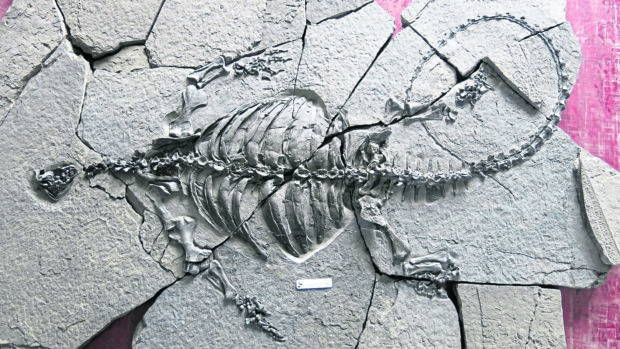Scottish scientists have been involved in the discovery of a fossilised turtle, which has revealed new details about the evolution of the species.
At 228 million years old, the fossil shows the early stages of the marine animals’ development and the findings have been outlined in a new paper published in Nature.
The 7.5ft long skeleton is nearly complete and was discovered in Guizhou Province in southern China.
It highlights the complex early history of turtles and there is good evidence to indicate that the snout of the new turtle was developed into a beak covered with a thin horny sheath, like so many modern-day turtles.
Dr Nick Fraser, keeper of natural sciences at National Museums Scotland co-authored the study with colleagues at the Chinese Academy of Sciences, the Field Museum of Natural History and the Canadian Museum of Nature.
Although it lacks the carapace and plastron (shell) that is so characteristic of a modern turtle, the “scaffolding” for the building of the shell is clearly in place.
The extremely broad ribs are spread out to the sides forming a wide, oval-shaped body just like a modern-day turtle.
Dr Fraser, who studied zoology and geology at Aberdeen University, said: “This impressively large fossil is a very exciting discovery that gives us another piece in the puzzle of turtle evolution.
“It shows that early turtle evolution was not a straightforward, step-by-step accumulation of unique characteristics, but was a much more complex series of events that we are only just beginning to unravel.”
When he first saw the fossil, it was still encased completely in rock, and only the vague outline of the body could be seen.
He added: “Even then it was clear that this was a bit of a monster and unlike anything else I had seen in these very rich deposits.
“A turtle was just one of many things that went through my mind, but I was truly stunned when I saw the whole fossil fully prepared”.
The international team behind the study believes the new form was probably an inhabitant of coastal waters foraging on land as well as in the water.
It is believed it searched the mud along the shore, using its powerful limbs in a similar way to many living pond turtles.
